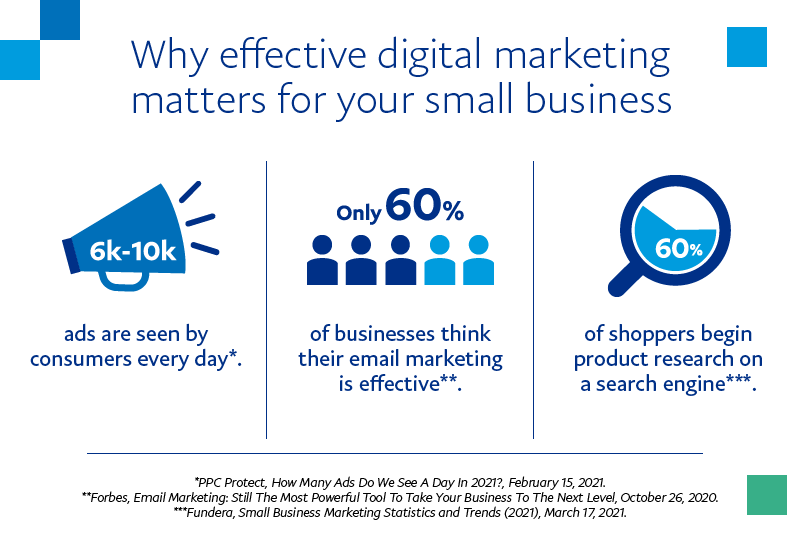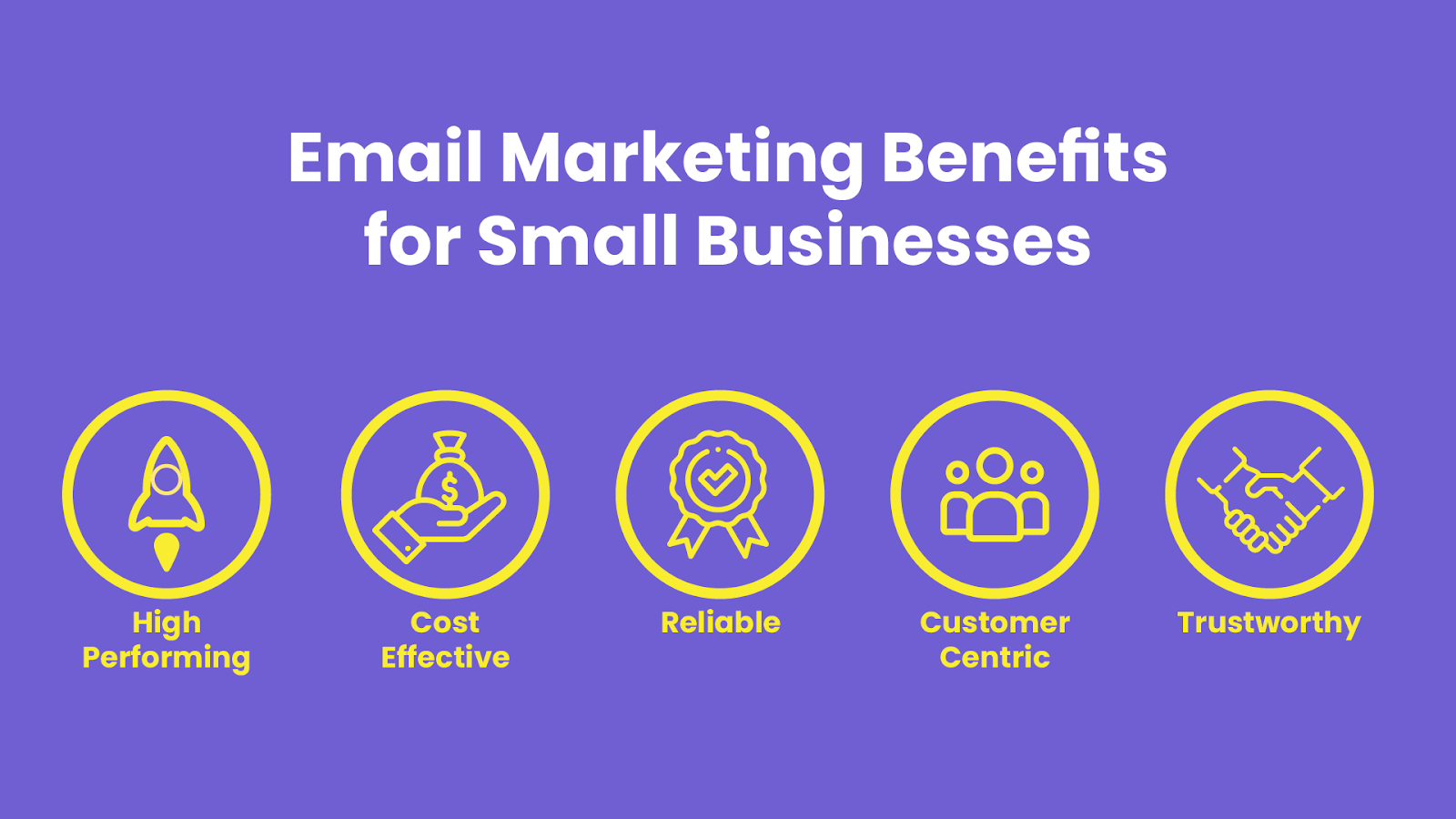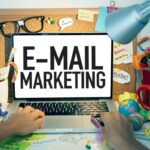Yes, email marketing is still effective for small businesses. It remains a cost-effective way to reach customers.
Email marketing helps build relationships and drive sales. In today’s digital age, many small businesses wonder if email marketing is still worth the effort. With social media and other digital marketing strategies on the rise, it’s easy to overlook the power of a well-crafted email.
But don’t be too quick to dismiss this tool. Email marketing offers direct communication with your audience, personalized messages, and measurable results. It allows small businesses to connect with customers on a personal level, fostering loyalty and trust. Plus, it’s budget-friendly, making it accessible to even the smallest businesses. So, let’s dive into why email marketing continues to be a valuable asset for small businesses.

Credit: www.allbusiness.com
Introduction To Email Marketing
Email marketing has been a staple for small businesses for many years. It helps you connect with customers directly. With the rise of social media and other digital platforms, some wonder if it is still effective. Let’s explore the basics and see how it has evolved.
Brief History
Email marketing started in the late 1990s. Businesses found it a quick way to reach customers. The first marketing emails were simple. They often included text and some links. Over time, emails became more sophisticated. Companies began using images, videos, and personalized content.
Back then, people received fewer emails. They were more likely to open and read them. As more businesses adopted email marketing, inboxes became crowded. This led to the need for better strategies to stand out.
Current Trends
Today, email marketing is still relevant. It has evolved with new trends and technologies. Here are some current trends:
- Personalization: Tailoring emails to individual preferences and behaviors.
- Automation: Using tools to send timely and relevant emails.
- Mobile Optimization: Ensuring emails look good on smartphones and tablets.
- Interactive Content: Including elements like polls, quizzes, and videos.
Small businesses can benefit from these trends. By staying updated, they can keep their email marketing effective and engaging.

Credit: www.paypal.com
Benefits For Small Businesses
Email marketing remains a vital tool for small businesses. It offers numerous benefits that can help grow your business. Below, we explore two key benefits of email marketing for small businesses.
Cost-effectiveness
Email marketing is budget-friendly. Small businesses often have limited funds. Email marketing does not need a big budget. You can reach many people with little money. This makes it easier to get a good return on investment. Also, there are many tools available that help you manage email campaigns. These tools often come with free or low-cost plans. You can start small and scale as you grow.
Direct Communication
Email marketing allows direct contact with your customers. You can send personalized messages. This builds a stronger relationship with your audience. Customers feel valued when they receive tailored content. You can also get feedback directly through emails. This helps improve your services and products. Direct communication can lead to higher customer loyalty.
Challenges Faced
Email marketing offers many benefits for small businesses. Yet, it comes with its own set of challenges. These challenges can affect the success of email campaigns. Understanding these obstacles helps businesses navigate them better. This section focuses on two primary challenges: Spam Filters and Email Fatigue.
Spam Filters
Spam filters are essential for protecting inboxes. They stop unwanted or harmful emails. Yet, they can also block legitimate marketing emails. This means your carefully crafted email might never reach your audience. It’s crucial to follow best practices to avoid this.
- Use a recognizable sender name.
- Avoid spammy words like “free,” “urgent,” or “win.”
- Ensure your email content is relevant and valuable.
- Include an easy way to unsubscribe.
Following these steps helps you avoid the spam folder. This increases the chance your email will be read.
Email Fatigue
Email fatigue happens when subscribers receive too many emails. They may start to ignore or delete them. This reduces the effectiveness of your email campaigns. Understanding how to manage this is key.
- Don’t send emails too frequently.
- Offer value in every email.
- Segment your email list for targeted content.
- Monitor engagement rates and adjust as needed.
Balancing your email frequency and content keeps your audience engaged. This reduces email fatigue and improves your campaign’s success.
Effective Strategies
Small businesses often question the effectiveness of email marketing. Yet, with the right strategies, it can yield impressive results. Here, we’ll explore some effective strategies to make your email marketing efforts successful.
Personalization
Personalization is key in email marketing. Generic emails are less likely to engage your audience. Instead, consider using the recipient’s name in the subject line or email body. This small touch can make a big difference.
Use data to tailor your content. For example, if a customer recently purchased a product, send them related product recommendations. Personalized emails can increase engagement and drive sales.
Here’s an example of a personalized email:
Subject: Hi [Name], Check Out Our New Arrivals!
Body: Dear [Name], we noticed you love [Product]. We thought you'd like our new collection. Click here to explore!Segmentation
Segmentation involves dividing your email list into smaller groups. This allows you to send more targeted emails. For instance, you can segment based on purchase history, location, or engagement level.
Consider this segmentation strategy:
| Segment | Criteria | Content Example |
|---|---|---|
| Recent Purchasers | Purchased within the last 30 days | Thank you for your purchase! Here’s a discount on your next order. |
| Inactive Subscribers | No engagement in the last 6 months | We miss you! Come back and get 20% off your next purchase. |
Segmenting your email list can lead to higher open and click-through rates. Tailored content resonates better with your audience.
In summary, personalization and segmentation are effective strategies. They help make your email marketing efforts more impactful. Start using these tactics to see better results.
Tools And Platforms
Email marketing remains a powerful tool for small businesses. It can boost customer engagement and drive sales. But choosing the right tools and platforms is key. This section will guide you through popular options and features to look for.
Popular Options
Several email marketing tools offer various features tailored to small businesses. Here’s a look at some popular choices:
| Tool | Key Feature | Pricing |
|---|---|---|
| Mailchimp | User-friendly interface | Free and paid plans |
| Constant Contact | Excellent customer support | Paid plans |
| Sendinblue | Advanced automation | Free and paid plans |
| AWeber | Great for beginners | Free and paid plans |
Features To Look For
Choosing the right email marketing tool involves looking at several key features:
- Ease of Use: The platform should be easy to navigate.
- Automation: Look for tools with automation features. These can save time.
- Templates: Ready-made templates can simplify email creation.
- Segmentation: The tool should allow you to segment your audience. This ensures targeted campaigns.
- Analytics: Detailed analytics help track performance. You can see what works and what doesn’t.
These features can make or break your email marketing efforts. Choose wisely to maximize your results.
Case Studies
Many small businesses wonder if email marketing still works. To answer this, let’s look at some real-life examples. These case studies showcase how email marketing can help small businesses grow. They also highlight the lessons learned from these experiences.
Success Stories
One small bakery started sending weekly newsletters. They shared new recipes and special offers. Within three months, their sales increased by 20%. Customers loved the personal touch and looked forward to the weekly emails.
Another example is a local gym. They used email marketing to offer free trial sessions. They saw a 30% rise in new memberships. Many people signed up after trying the gym for free.
Lessons Learned
Consistency is key. Sending regular emails keeps your business in the minds of customers. But don’t overdo it. Too many emails can annoy people. Find a balance.
Personalization matters. Emails that address customers by name get more attention. Tailor content to their interests. It makes them feel valued and understood.
Track your results. Use analytics to see what works and what doesn’t. Adjust your strategy based on this data. This approach helps improve your email campaigns over time.
Metrics To Track
Tracking the right metrics is crucial to understand the effectiveness of your email marketing campaigns. These metrics provide insight into what works and what needs improvement. Here are some key metrics you should monitor:
Open Rates
Open rates show the percentage of recipients who opened your email. This metric indicates how well your subject lines and sender names are performing.
To calculate the open rate, use the following formula:
Open Rate = (Number of Emails Opened / Number of Emails Delivered) 100For instance, if you sent out 1,000 emails and 200 were opened, your open rate is 20%. Aim for an open rate of at least 20% to 30% for a healthy campaign.
Click-through Rates
Click-through rates (CTR) measure how many recipients clicked on the links within your email. This metric helps you understand the engagement level of your content.
Calculate CTR using this formula:
Click-Through Rate = (Number of Clicks / Number of Emails Delivered) 100For example, if 50 out of 1,000 recipients clicked on a link, your CTR is 5%. A good CTR generally falls between 2% and 5%, depending on your industry.
To improve CTR, consider the following tips:
- Use clear and compelling calls to action (CTAs).
- Ensure your email design is mobile-friendly.
- Personalize content to match the interests of your audience.
Monitoring open rates and click-through rates can provide valuable insights into the success of your email marketing efforts. By regularly reviewing these metrics, you can make data-driven decisions to enhance your campaigns.
Future Of Email Marketing
The future of email marketing holds immense potential for small businesses. With emerging trends and technological advancements, email marketing continues to evolve. Businesses must stay updated to leverage these changes effectively.
Emerging Trends
Several emerging trends are shaping the future of email marketing:
- Personalization: Tailoring content to individual preferences increases engagement.
- Interactive Emails: Emails with videos, polls, and quizzes boost interactivity.
- Automation: Automated emails save time and ensure timely communication.
- Mobile Optimization: Optimizing emails for mobile enhances user experience.
Technological Advancements
Technological advancements are enhancing email marketing effectiveness:
- AI and Machine Learning: AI helps in predicting customer behavior and improving personalization.
- Advanced Analytics: Detailed insights into email performance guide better strategies.
- CRM Integration: Integrating CRM systems streamlines customer data management.
- Enhanced Security: Improved security measures protect customer information.

Credit: unlayer.com
Frequently Asked Questions
What Is Email Marketing?
Email marketing is a digital strategy where businesses send emails to prospects and customers. It helps promote products, services, and build customer relationships.
Why Is Email Marketing Important?
Email marketing is important because it offers direct communication with customers. It is cost-effective, measurable, and can be personalized to target specific audiences.
How Can Small Businesses Benefit From Email Marketing?
Small businesses can benefit from email marketing by building customer loyalty. It increases brand awareness, drives website traffic, and boosts sales effectively.
Is Email Marketing Cost-effective?
Yes, email marketing is cost-effective. It requires minimal investment compared to traditional marketing methods. It offers high ROI and measurable results.
Conclusion
Email marketing remains effective for small businesses. It builds relationships and drives sales. Small businesses can engage directly with customers. Personalized emails create loyal customers. Cost-effective and measurable, email marketing is crucial. Small businesses should invest in email strategies. Consistent and relevant content keeps audiences engaged.
Test and refine campaigns for better results. Email marketing, done right, offers great potential. Small businesses thrive with effective email strategies.




